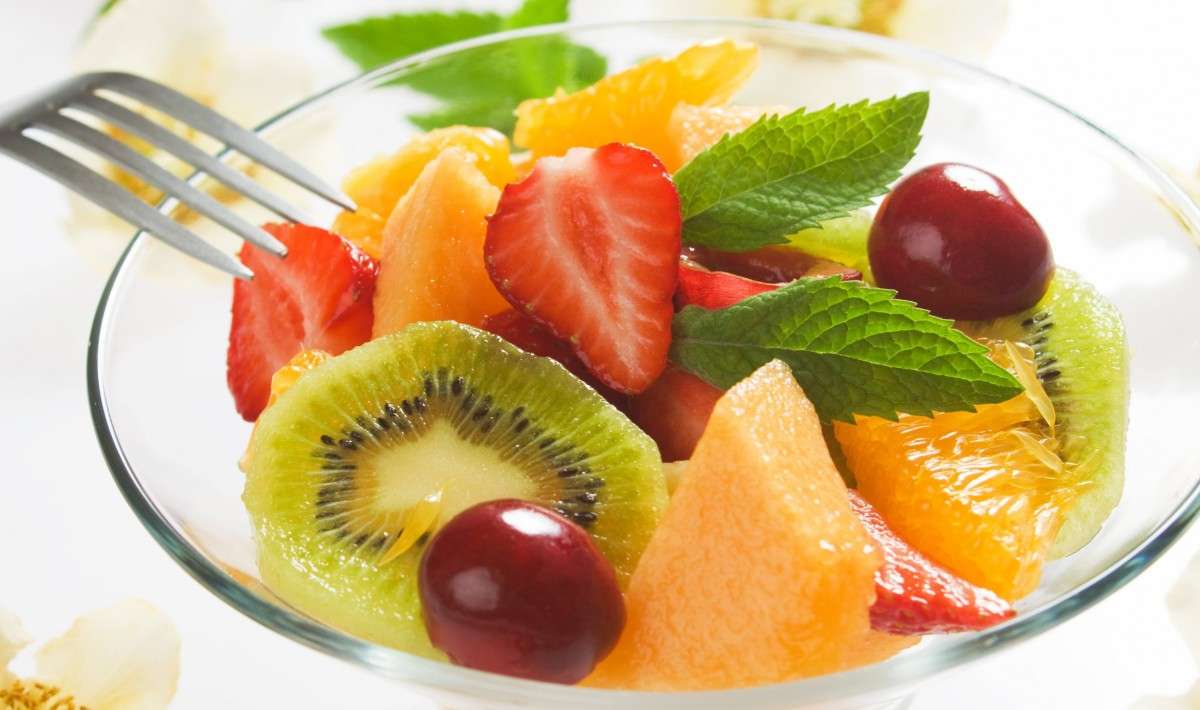1) Fructose found naturally in small amounts in real food/fruit is not a bad guy.
The bad guy is the chemically created high fructose corn syrup that wreaks havoc on the body. It is not the same. Furthermore, in addition to the small amounts of natural fructose sugars that real fruit has, it also comes with a plethora of other health-promoting nutrients – it’s low calories, has tons of fibre (which undisputedly supports weight loss), and has a high water content.
When it comes to weight loss or management, numerous studies show that many kinds of fruits help with weight loss – not to mention is linked to reduced risk for diabetes, high blood pressure, cancers and heart disease. For example, in one study in “85 obese people, eating grapefruit or drinking grapefruit juice before meals for 12 weeks resulted in a decrease in calorie intake, a 7.1% decrease in body weight, and improved cholesterol levels” (https://www.ncbi.nlm.nih.gov/pubmed/21288350)
In another study, “women were given three apples, three pears, or three oat cookies — with the same calorie value — per day for 10 weeks. The apple group lost 2 pounds (0.91 kg) and the pear group 1.6 pounds (0.84 kg), while the oat group’s weight did not change”. (https://www.ncbi.nlm.nih.gov/pubmed/18439712)
Yet another study showed that eating two golden kiwi fruit per day reduced waist circumference by over 1 inch in 12 weeks for the participating subjects. It also helped improve gut health and controlled blood sugars.
2) Let’s talk about the other issue: blood sugar stability.
Because fruit has natural sugar, it can raise blood sugar levels. The rate at which this happens (for any food, not just fruit) is called the Glycemic Index. You’ve probably heard of this. It’s a measure of how quickly sugars get broken down from the food you eat and absorbed into the bloodstream. We want a slow steady absorption of sugars into our blood, as opposed to a quick spike. Despite having natural fructose sugar, many fruit is low glycemic index; including apples, citrus fruit, berries and stone fruits (aka fruit with a pit inside – plums, nectarines, peaches). Even bananas are surprisingly only considered a moderate GI.
HOW is it that most fruit is low GI? A couple reasons:
- Remember it has lots of fibre. Guess what fibre does? It slows down the digestion and breakdown of the food – thereby slowing the absorption of the sugars from it.
- Sure, fruit has natural sugars, but not a high amount. Even watermelon, which is considered high GI, would have to be eaten in a ridiculously high amount (like 2 or 3 whole watermelons!) to have enough sugars entering the bloodstream to be a problem for a healthy person.
One last note about GI and blood sugar levels: Even if your fruit has a higher GI, if you eat it with fibre, healthy fat, and/or protein – all of which will slow down digestion and absorption of the sugars – it will reduce what we call the Glycemic Load of that meal or snack. Yes, even a high glycemic indexed food can be made a lower glycemic effect when the overall load is reduced by eating a lower glycemic indexed food with it. Good-food news!
For more info on the glycemic index and load, see https://buildnutrition.ca/glycemic-index-load-explained/
The information above is not intended to replace that which you may have from your primary care physician. Always consult with your medical team before changing diet if you are diabetic or under care for a medically diagnosed condition.
Support with meal prep, recipe ideas customized to you and your family’s needs, and more!
.
Leave a comment for us below, we appreciate your feedback!
